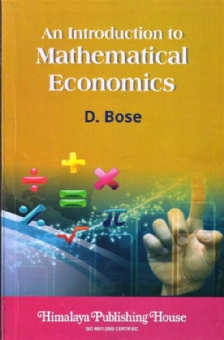An Introduction to Mathematical Economics
no information available
An Introduction to Mathematical Economics offers a clear and accessible approach to understanding how mathematics is used to solve complex economic problems. This resource covers essential mathematical tools, including optimization, calculus, and linear algebra, and demonstrates their application in various areas of economics, such as market analysis, production theory, and economic modeling. Ideal for students and professionals, this guide bridges the gap between abstract mathematics and practical economic applications, helping you develop the skills needed to analyze economic phenomena using mathematical methods.











